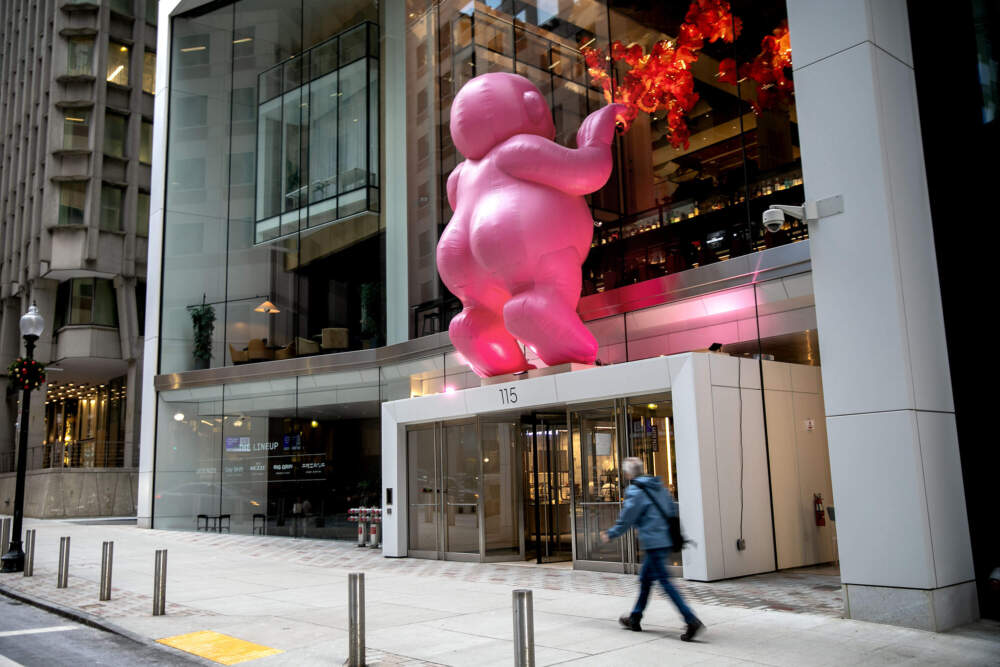Editor’s Note: This story is an excerpt from WBUR’s weekly arts and culture newsletter, The ARTery. If you like what you read and want it in your inbox, sign up here.
Happy birthday to WBUR! The WBUR Festival kicks off today in honor of the station’s 75th anniversary. Really, it’s just an excuse to have a big party — and hopefully this isn’t the first you’re hearing of it. We’ve got some pretty impressive headliners: Ira Glass, Roxane Gay, Ina Garten, Anthony Fauci, Sam Sanders, Viet Thanh Nguyen, Kathleen Hanna, Jamelle Bouie, Kara Swisher and Alisa Amador, to name but a few. It’s not too late to grab your tickets, and help support the vital journalism WBUR produces every day.
But there’s more than just public radio-style celebrity on display. The festival is packed with thoughtful panels on a range of topics, including the arts. On Saturday morning, I’ll be moderating a conversation called “Art in Public” with Kenneth Bailey of DS4SI, Caleb Hawkins of Masary Studios (and 2024 Maker), and Boston Public Art Triennial founder Kate Gilbert. All three are movers and shakers in Boston’s public art space, and they each come at it from a different perspective.
As it happens, I’ve covered a number of public art stories already this year, including the Boston Business Alliance’s Winteractive pop-up art series (aka those huge pink inflatable nude guys that briefly graced Downtown) and the Boston Public Art Triennial, which recently installed 20 contemporary art installations all over the city. To my mind, the two endeavors represent the full range of what temporary public art aims to do: the first is primarily concerned with stimulating commercial activity downtown, and the other wants nothing less than to make Boston a contemporary art destination. Both aim to spark conversation, and maybe even friction, among the citizenry.

As I was preparing for the conversation on Saturday, I stumbled upon an essay by the critic Patricia C. Phillips, in which she argues that both public and private interests have pushed public art toward “mediocrity,” and urges us to ask the question, “What can public art uniquely do?” She laments that developers have co-opted public art primarily to serve commercial interests, burnishing their reputations and cheapening the art in the process. She worries that the democratization of public art selection committees has resulted in a propensity for “minimum-risk” art that will offend the fewest number of people. And she makes the case for public art that embraces her definition of the democratic process, which she describes as a site of “spirited disagreement, of conflict, of only modest compromises—and of controversy.”
It wasn’t until the end of the essay that I realized it was published in 1985. Much of what Phillips was concerned with still resonates today. Boston, like many cities, is undergoing a public art explosion. But to what end? How should we define public art? What should we expect it to do?
I plan to delve into these questions on Saturday, and I hope you’ll join me. I hope you’ll also check out another panel, moderated by my brilliant colleague Arielle Gray, called “Why Museums Matter.” You could even have a beer with arts editor Tania Ralli and author Hannah Selinger, which I highly recommend. Also on Saturday, two of our former Makers, Naomi Westwater and Pranav Swaroop, will be performing at the Street Fair Stage. Check out the full schedule here.
